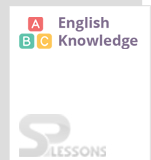 Introductions
Introductions
A sentence is a combination of different words. It is only because of these words that a sentence becomes meaningful and understandable by others. These words can therefore be called different parts of speech.
The various parts of speech are:
- Nouns
- Pronouns
- Adjectives
- Verb
- Adverbs
- Preposition
- Interjection
- Conjunction
 Introductions
Introductions
Different Parts of Speech:
Nouns:
Words used to make the mention of different persons, places, animals or things are called Nouns. In the following examples, the highlighted parts are nouns.
- This is my cat.
- Rita is my sister.
- Parul stays in Australia with her family.
- This is his book.
- The dogs are snoring and sleeping under the tree.
- The team members are singing.
- The puppy is very cute.
- She completed her homework slowly.
- My brother was looking very handsome today.
- The fox is a clever animal.
- The frog was in the middle of the puddle.
- The soldiers fought the battle bravely.
- The student stood outside and waited for his classmate.
- The students were quite while the teacher was present.
- Well! This is the wrong answer.
- Wow! I cleared my Mathematics test with flying marks.





